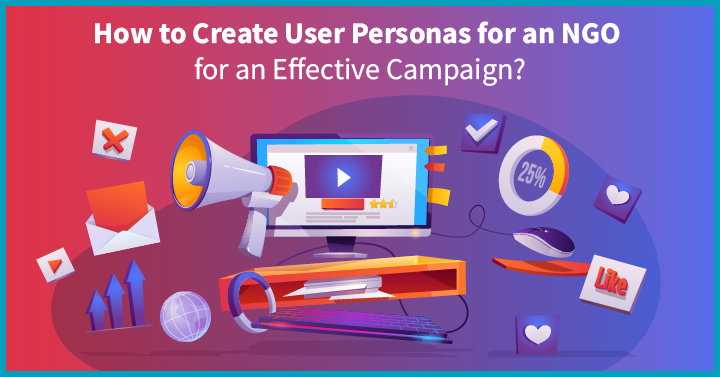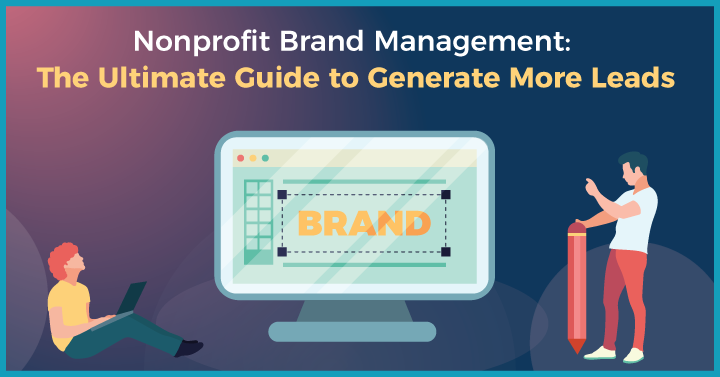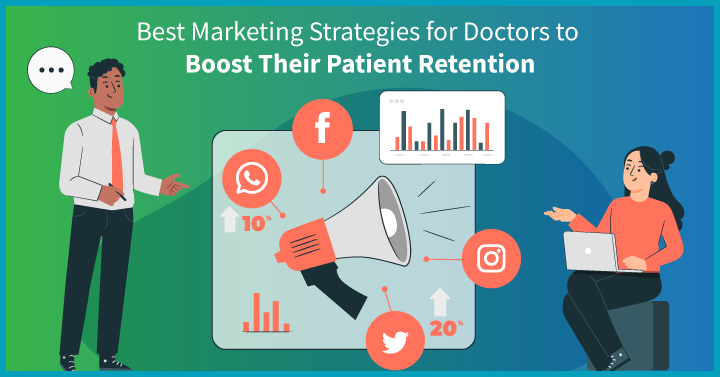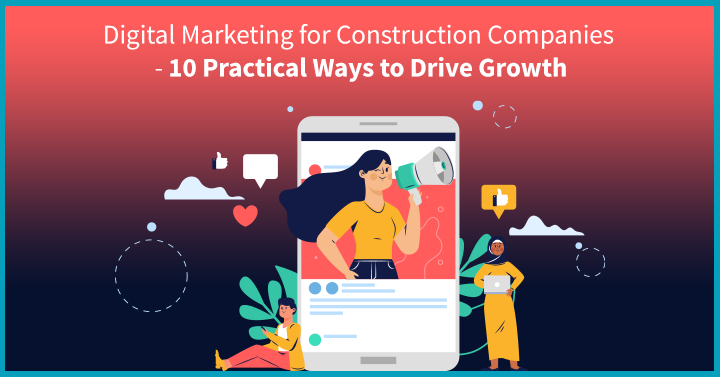According to a study by Statista, adults in the U.S. spend more than 8 hours on digital media daily.
From scrolling through social media feeds to shopping online, our daily routines are increasingly intertwined with the digital landscape.
But what does this digital dominance mean for businesses?
It presents an unprecedented opportunity to target the vast and diverse audience, lead them towards conversions and maximises returns on investment. However, to harness the full potential of the digital world, companies need to develop an integrated digital marketing strategy where the customer is at the centre of all the business decisions.
In this blog, we will explore digital marketing strategy, and its benefits. We will also walk you through various steps to create a winning strategy for your business.
However, before directly jumping into digital strategy, let’s quickly explore the difference between strategy and tactics.
1. Strategy vs. Tactics: The Key Differences
Strategy and tactics, being interconnected, are often used synonymously in the digital marketing space. While both are crucial in a marketing plan, strategy and tactics differ in their purposes. Here is a breakdown of the two terms –
| Key Differentiators | Strategy | Tactics |
|---|---|---|
| Definition | Strategy is a comprehensive and high-level action plan that businesses create to achieve their long-term goals. It involves making critical decisions, directing the plan and allocating resources to attain desired objectives. | Tactics are the specific actions or techniques that help in the accomplishment of the strategy & achieve short-term goals. It involves making practical decisions and laying down action plans to carry out the strategy effectively. |
| Focus | While preparing a marketing strategy, the focus is on the purpose or the long-term results that the business aims to achieve. | In the case of tactics, the focus is on actionable, measurable, and repeatable tasks that contribute to immediate objectives. |
| Timeframe | Strategies are typically long-term and provide a roadmap for the end goal over an extended period. | Tactics are more short-term and focused on immediate actions. They can be adjusted based on changing circumstances and feedback. |
| Examples | The strategy is the overarching plan to achieve a 50% increase in contact form submissions within the next six months to enhance lead generation. It outlines the long-term objective. | The tactic is a specific action taken to support the strategy. It includes specific steps like optimising website traffic, strategic form placement, gated content, & social media promotion. Each of these tactics contributes to the strategic goal of increased form submissions. |
Simply put, it’s not about choosing between strategy and tactics, but about using both together. Think of them like two parts of a whole—they’re both needed to reach your marketing goals.
Now let’s move ahead and understand digital marketing strategy in detail –
2. What is Digital Marketing Strategy?
A digital marketing strategy is a comprehensive approach that outlines how an organisation or business can achieve specific goals by leveraging different digital channels, platforms, and technologies. It involves utilising various online marketing tactics and tools to connect with the target audience, build brand awareness, boost website traffic, generate leads and ultimately convert them to increase sales.
Now that we are aware of the basics of the digital marketing strategy, let’s explore some of the key benefits in the next section:
3. Benefits of a Digital Marketing Strategy
According to research by Content Marketing Institute, 75% of marketers increased their company’s credibility and trust with effective digital marketing.
This is not all! Digital marketing strategy helps businesses in much more ways. A few of them are explained below –
3.1 Expands the Market Reach & Targets the Right Audience
A digital marketing strategy comprises tactics like SEO, paid media, social media marketing, and email marketing that enable organisations to increase their online visibility and connect with target audiences. Additionally, it helps in determining the demographics, interests and behaviours of potential customers ensuring that the right message reaches the right audience.
3.2 Facilitates Performance Tracking and Optimisation
With the help of various marketing analytics tools, businesses can gather data on key performance indicators (KPIs) such as website traffic, conversion rates, click-through rates and more. By analysing this information, companies can identify areas for improvement, make data-driven decisions, and optimise their marketing strategies for better results.
3.3 Helps Generate High-Quality Leads
A digital marketing strategy enables precise targeting and personalised messages, resulting in higher-quality leads that are more likely to convert into customers. Companies can engage potential customers and convert them into leads by utilising techniques like content marketing, social media advertising, and influencer marketing.
3.4 Enhances Customer Experience at Every Stage
From the initial brand discovery to the decision and post-purchase stage, organisations can utilise various digital marketing tactics to engage with customers, provide relevant information, and address their concerns. Furthermore, by utilising data-driven insights, businesses can create personalised marketing to enhance customers’ overall experience and build stronger relationships with them.
3.5 Boosts ROI on Marketing Expenditure
By segregating the audience into different segments and creating targeted marketing initiatives for each group, companies can minimise wasted marketing spend and focus their resources on reaching the right audience. Additionally, the ability to track and measure campaign performance enables organisations to analyse the effectiveness of their marketing efforts and optimise to improve the ROI.
3.6 Fosters a Competitive Edge in the Market
Businesses that effectively leverage digital channels can establish a solid online presence, build relationships with potential customers, and differentiate themselves from their competitors. Additionally, by understanding customer preferences, utilising innovative marketing techniques, and adapting to evolving market trends, businesses can gain a competitive edge and position themselves as industry leaders.
Let’s move further and dive into the critical elements of a digital marketing strategy –
4. 7 Key Elements of Digital Marketing Strategy
A digital marketing strategy combines a few components to help you achieve the desired results and accelerate business growth. Here is a brief overview of these critical elements –
4.1 Search Engine Optimisation
Search Engine Optimisation is a marketing technique that helps in boosting a website’s visibility and enhances its ranking in search engine result pages (SERPs). It includes optimising website content, adding meta tags and concise URLs, and improving the site structure. The primary goal of targeted SEO is to attract relevant visitors to the website and increase quality traffic organically.
4.2 Content Marketing
Content marketing is a strategic approach that involves creating and distributing informative, relevant and engaging blog posts, articles, videos, infographics, ebooks, and more. It helps to attract the target audience, drive the desired customer action (such as newsletter signup or demo request) and ultimately retain customers.
4.3 Paid Media
Paid media is a marketing approach that allows organisations to promote their content through pay-per-click (PPC) advertising, display ads, social media advertising, sponsored content, and more. Paid media campaigns can help reach a broader audience, generate website traffic, boost brand visibility, and increase business revenue.
4.4 Social Media Marketing
Social media marketing involves using platforms such as Facebook, Instagram, Twitter, LinkedIn, etc. to build brand awareness, engage with the audience, promote products/services, and drive website traffic. It includes activities like posting pictures, videos, and stories, running ad campaigns, and interacting with followers and target audiences to build a community around your brand.
4.5 Data Analytics & Reporting
Data analytics and reporting involve gathering and analysing data related to digital marketing activities. It includes tracking website traffic, user behaviour, conversion rates, click-through rates, engagement metrics, and more. By utilising tools like Google Analytics, businesses can gain insights into their digital marketing efforts’ effectiveness, identify improvement areas, and make data-driven decisions.
4.6 UI/UX & CRO
User interface (UI) and user experience (UX) design focus on optimising the website’s design, layout, and functionality to provide a seamless and user-friendly experience. Additionally, conversion rate optimisation (CRO) involves improving elements on the website (such as forms, landing pages, and call-to-action) to increase the likelihood of visitors taking desired actions. Both UI/UX and CRO enhance user satisfaction, reduce bounce rates, and increase conversion rates.
4.7 Website Design & Development:
A well-designed and user-friendly website is essential for a successful digital marketing strategy. It involves creating a visually appealing and responsive website that aligns with the business, offers easy navigation, loads quickly, and provides a positive user experience. Effective website development ensures the website’s technical functionality, security, and SEO-friendliness.
By incorporating these 7 key elements into a digital marketing strategy, you can drive your business ahead in the ever-changing digital world.
Now let’s explore the steps to create a performance-oriented digital marketing strategy.
5. How to Create a Winning Digital Marketing Strategy?
Developing a well-planned digital strategy is crucial to driving business goals and enhancing profitability.
Here are vital steps to help you build the same –
5.1 Define Specific & Measurable Goals
The first step involves defining SMART (Specific, Measurable, Achievable, Relevant, Time-bound) goals as well as KPIs that align with business objectives. This includes analysing long-term business objectives, evaluating marketing and sales goals, and finally defining the KPIs to keep track of the goals. Once you have defined the objectives, you can create a strategy that helps you attain the same.
For example, a goal can be to increase market share, and the corresponding KPIs can be conversion rate, sales per quarter or number of leads acquired per month. While if the goal is to acquire new customers, then KPIs can be conversions/month, cost per acquisition etc.
5.2 Conduct Market & Competitor Analysis
The next step in creating a well-thought digital strategy is performing market research and evaluating competitors. Market research thoroughly assesses the most effective promotional channels and messaging platforms your target audience engages with. It also includes identifying emerging trends and aligning your marketing campaigns accordingly.
Additionally, conducting competitor analysis involves performing intensive research on the competitor’s website, keywords, social media channels, paid media, and overall business strategy to determine the gaps in your plan and differentiate yourself from your counterparts.
5.3 Understand your Target Audience and Create Buyer Personas
To effectively reach and engage the target audience, it is crucial to understand their demographics, needs, preferences, and behaviours. Hence, businesses should develop buyer personas, a fictional representation of their ideal customers, derived from research and data.
It helps you gain deeper insights into your target audiences’ interests, pain points, and online behaviour. Moreover, with this information, you can create tailored content and campaigns that resonate with your audience, leading to impactful and successful marketing strategies.
5.4 Craft a User-Friendly and Intuitive Web Design.
A responsive and robust web design is essential to provide a positive user experience and generate leads. The website should be visually appealing, easy to navigate, SEO-friendly and optimised for different devices to ensure it is accessible to a larger audience.
In addition, businesses must consider factors such as page loading speed, responsive design, clear call-to-action, and an interactive layout to ensure visitors can easily find the information they need and take desired actions on your website.
5.5 Develop Compelling Marketing Narratives
Crafting captivating marketing narratives involves creating a solid brand story and messaging that resonates with your target audience and, at the same time, aligns with your product or service positioning. The key to successful marketing narratives lies in effectively communicating the unique value proposition of an organisation while also addressing customer pain points.
Furthermore, creating an emotional connection that leaves a lasting impact on your audience is essential. Creating compelling stories can captivate your audience, differentiate your brand from your competitors, and drive meaningful engagement.
5.6 Create Content for Each Stage of the Buyer’s Journey
Developing content that caters to each stage of the buyer’s journey, also known as content mapping, strategically nurtures the audience. This helps create a cohesive experience and drive the audience from the awareness and engagement stage to decision and retention.
For example, companies can create educational content such as eBooks and blogs to raise awareness and attract potential customers. Provide case studies and explainer videos to aid the consideration stage, helping prospects evaluate options. Finally, offer persuasive landing pages and free trials to facilitate decision-making and convert leads into customers.
5.7 Prepare a Marketing Calendar & Implement the Strategy
Creating a marketing calendar aids in outlining the key campaigns, content creation, and promotional activities that will occur over a specific period. It helps you break down the campaigns and marketing initiatives into tasks and define their deadlines.
Hence, having a marketing calendar helps firms to allocate resources, assign responsibilities, and execute the planned activities on time to maximise the effectiveness of their marketing efforts. Lastly, it ensures a systematic and organised approach to implementing your digital marketing strategy.
5.8 Analyse the Results and Optimise Campaigns
The last step in developing an effective digital marketing strategy is to regularly analyse the performance of digital marketing campaigns using relevant metrics and key performance indicators (KPIs) such as website traffic, click-through rates, conversion rates, etc., to gauge the effectiveness of your strategy.
Further, businesses can identify recurring patterns in consumer behaviour, such as preferred services or buying habits. Based on the insights gained, you can make data-driven decisions and optimise your campaigns through necessary adjustments and improvements to achieve better results.
This entails the process of formulating a thoughtful digital marketing strategy. However, for successful implementation of the strategy, businesses would need the assistance of a digital marketing agency. Let’s explore how it works:
6. How can a Digital Marketing Agency Help?
A digital marketing agency has specialised teams with expertise in various areas of online marketing. Hence, they build and implement innovative strategies to market your products/services and increase sales and revenue. Moreover, they are well equipped with the latest trends in the market and adopt the best tools to help businesses engage their audience and stand out from their competitors.
At Growth Ganik, we offer a full scope of digital marketing services, including SEO, content marketing, paid media, website design, data analytics, and more. Our team works closely with clients to understand their business and create an integrated marketing plan that delivers positive ROI. Our team continuously monitors and analyses campaign performance to make data-driven adjustments and drive desired results.
Ready to ramp up your digital marketing strategy?
Book a free 45-minute consultation with our experts.
















